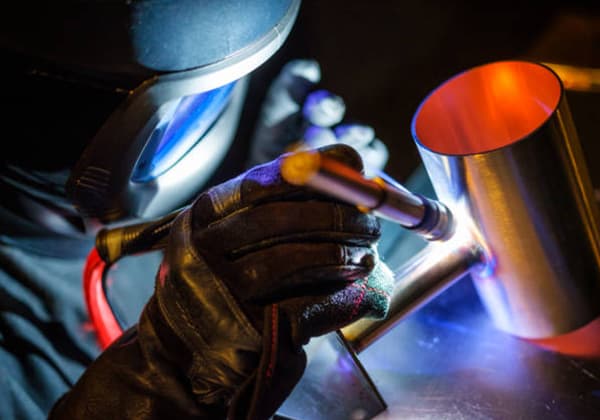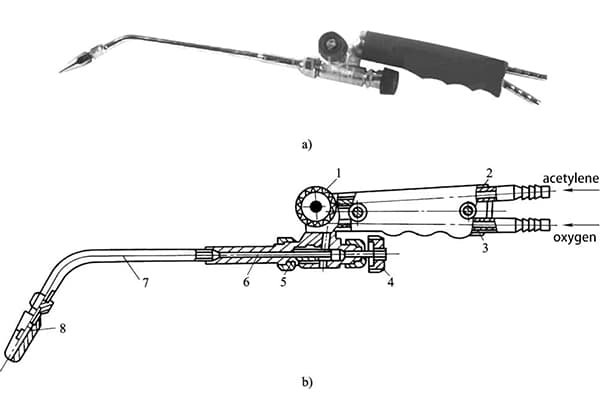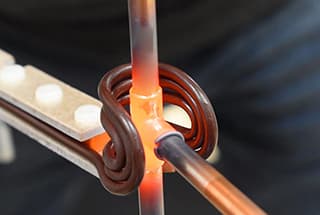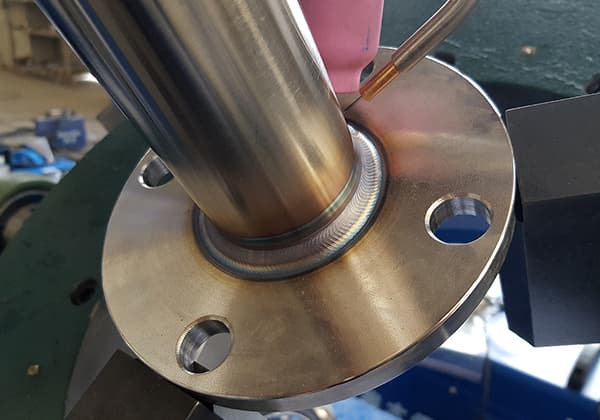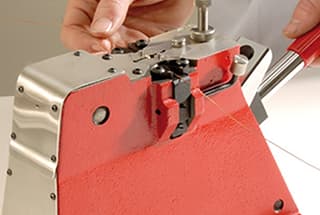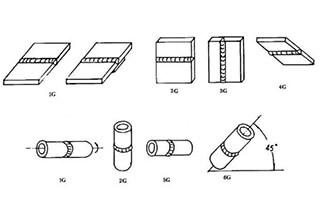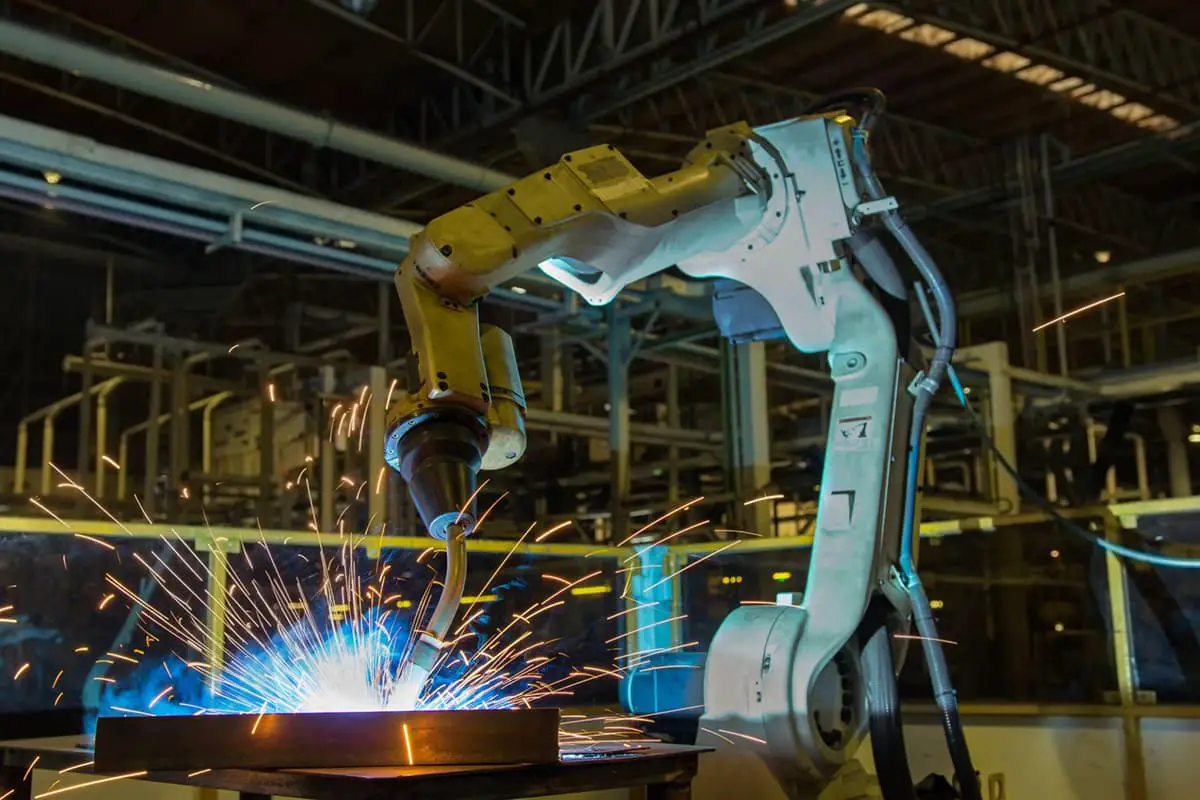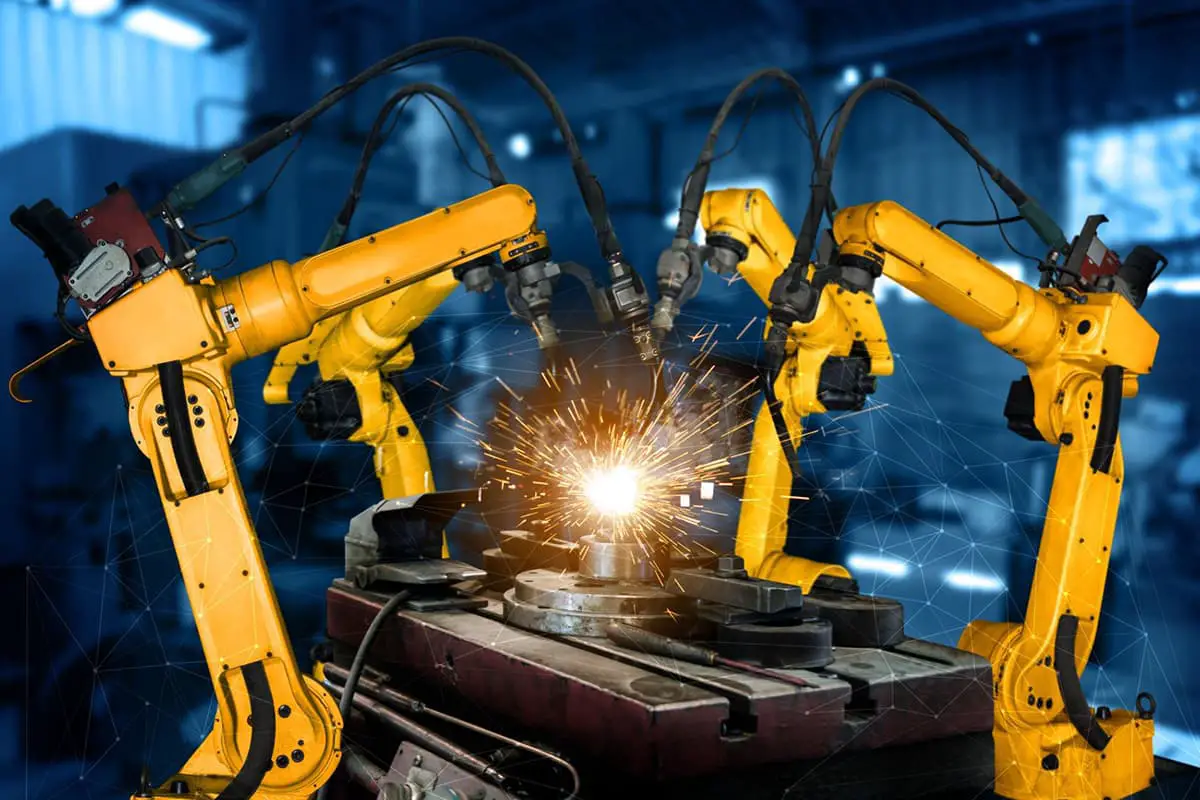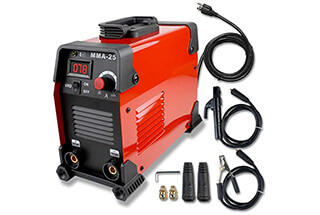
What makes one welding method better than another? This article explores the unique advantages and disadvantages of seven welding techniques, from Tungsten Inert Gas (TIG) to Manual Shielded Metal Arc Welding. Each method’s efficiency, cost, and suitability for different materials and thicknesses are examined, helping you understand which approach might be best for your specific project needs. Dive in to learn how each method stacks up in terms of productivity, quality, and practical application.
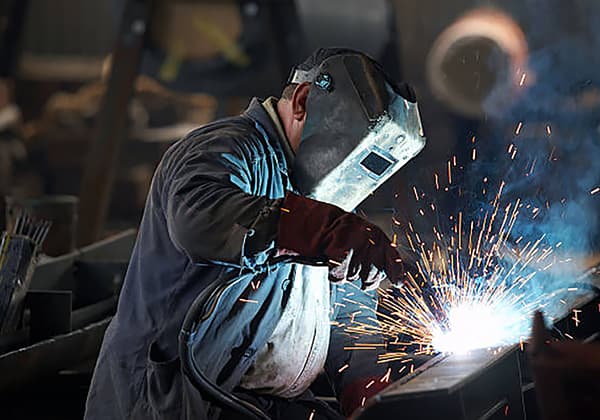

(1) Argon shielding gas effectively isolates the weld pool from atmospheric contamination. Being inert and insoluble in metals, argon doesn’t react with the workpiece. During welding, the arc’s cathodic cleaning action efficiently removes surface oxides from the molten pool. This makes TIG welding ideal for joining oxidation-prone, highly reactive non-ferrous metals, stainless steels, and various alloys, including titanium and aluminum.
(2) The tungsten electrode produces a highly stable arc, maintaining consistency even at extremely low currents (below 10A). This characteristic makes TIG welding particularly suited for precision work on thin sheets (down to 0.5 mm) and ultra-thin materials, allowing for exceptional control and minimal heat-affected zones.
(3) Independent control of heat source and filler wire addition enables precise heat input regulation. This flexibility facilitates welding in all positions and makes TIG an optimal choice for single-side welding with full penetration and double-side forming. The ability to adjust parameters on-the-fly allows welders to respond to changing joint conditions in real-time.
(4) As filler metal transfer occurs outside the main arc column, TIG welding produces virtually spatter-free welds. This results in smooth, aesthetically pleasing weld beads with minimal post-weld cleanup required. The clean process also reduces the risk of inclusions, enhancing weld quality and integrity.
(1) Limited penetration and deposition rate: TIG welding typically produces shallow weld seams with a relatively low deposition rate, resulting in reduced productivity compared to other welding processes. This limitation is particularly noticeable when welding thicker materials or when high production rates are required.
(2) Electrode sensitivity and potential contamination: The tungsten electrode used in TIG welding has a limited current-carrying capacity. Exceeding the recommended amperage can lead to electrode melting and vaporization. Consequently, tungsten particles may contaminate the weld pool, resulting in tungsten inclusions that compromise weld quality and mechanical properties.
(3) Higher operational costs: The use of inert shielding gases (such as argon or helium) contributes to increased production costs compared to other arc welding methods like manual metal arc welding (MMAW), submerged arc welding (SAW), or gas metal arc welding (GMAW) with CO2 shielding. This cost factor can be significant in large-scale production environments.
Note: Pulsed TIG welding offers improved control and is particularly effective for thin plate welding, especially in all-position butt joints. However, standard TIG welding is generally limited to materials with thicknesses less than 6mm for optimal results. For thicker materials, alternative welding processes or multiple passes may be necessary to achieve the required penetration and joint strength.
(1) Similar to Gas Tungsten Arc Welding (GTAW), GMAW can effectively join a wide range of metals, with particular efficacy for aluminum and its alloys, copper and copper alloys, and stainless steel. Its versatility stems from the inert argon shielding gas, which prevents atmospheric contamination of the weld pool.
(2) The consumable wire electrode serves a dual purpose as both the arc source and filler material, enabling the use of high-density currents. This results in deeper penetration into the base metal and a faster deposition rate of filler material. When welding thick sections of aluminum, copper, or other highly conductive metals, GMAW offers superior productivity compared to GTAW. Additionally, the concentrated heat input leads to reduced overall heat-affected zone and consequently less welding-induced distortion.
(3) GMAW typically employs Direct Current Electrode Positive (DCEP) polarity, also known as reverse polarity. This configuration is particularly advantageous when welding aluminum and its alloys, as it provides an efficient cathodic cleaning action. The cleaning effect breaks down the tenacious oxide layer on aluminum surfaces, crucial for achieving high-quality welds.
(4) When welding aluminum and its alloys, GMAW exhibits a pronounced self-regulation effect in the short-circuit transfer mode. This phenomenon, often referred to as the “inherent stability of the welding arc,” helps maintain a consistent arc length and stable welding parameters, even with minor variations in torch-to-work distance. This self-regulation contributes to improved weld quality and reduces the demand for operator skill in maintaining precise arc length control.
MIG welding usually uses inert gas (argon, helium or their mixture) as the shielding gas in the welding zone.
(1) The inert shielding gas’s non-reactive nature with metals and its insolubility in molten metal pools enable MIG welding to be versatile, applicable to almost all metals and alloys. This includes ferrous metals like steel and stainless steel, as well as non-ferrous metals such as aluminum, copper, and nickel alloys.
(2) The absence of a flux coating on the welding wire allows for higher current densities, resulting in deeper penetration into the base metal. This feature, combined with the faster wire feed rates, leads to significantly higher deposition rates compared to traditional stick welding or TIG processes. Consequently, MIG welding offers superior production efficiency, particularly in high-volume manufacturing environments.
(3) MIG welding primarily utilizes spray transfer mode for optimal performance. Short-circuit transfer is reserved for thin-gauge materials, while globular transfer is generally avoided due to its inconsistency. For aluminum, magnesium, and their alloys, pulsed spray transfer is preferred. This mode creates a larger cathode region, enhancing molten pool protection and resulting in well-formed weld beads with minimal defects. The pulsed technique also allows for better control of heat input, crucial for these heat-sensitive materials.
(4) While MIG welding is capable of all-position welding using short-circuit or pulsed transfer modes, it’s important to note that flat and horizontal positions typically yield higher efficiency. Vertical and overhead welding, though possible, may require reduced parameters and specialized techniques to maintain weld quality and productivity.
(5) The predominant use of Direct Current Electrode Positive (DCEP) in MIG welding contributes to arc stability, uniform droplet transfer, and minimal spatter. This polarity also promotes better cleaning action on oxide-prone materials like aluminum, ensuring high-quality weld beads with excellent fusion and aesthetics. Modern power sources with advanced waveform control further enhance these benefits, allowing for precise manipulation of the welding arc characteristics.
(1) Higher operational costs: The inert shielding gases used in MIG welding, such as argon or helium, are relatively expensive compared to active gases like CO2. This can significantly increase the overall welding costs, especially for large-scale or long-term projects.
(2) Sensitivity to surface contaminants: MIG welding is highly susceptible to impurities on the base metal and welding wire. The presence of oil, rust, or other contaminants can lead to porosity in the weld, compromising its structural integrity. This necessitates thorough cleaning and preparation of materials before welding, which can be time-consuming.
(3) Limited penetration and outdoor applications: Compared to processes using CO2 as shielding gas, MIG welding with inert gases typically achieves less penetration depth. This can be a disadvantage when welding thicker materials or when deep penetration is required. Additionally, the inert gas shield is easily disrupted by wind, making MIG welding less suitable for outdoor applications without proper shielding or wind protection measures.
(1) CO2 arc welding offers superior penetration, enabling reduced groove requirements and increased blunt edge capabilities when welding thick plates. The high welding current density results in an elevated melting rate of the welding wire. Post-weld slag removal is generally unnecessary, contributing to a productivity increase of 1-3 times compared to conventional stick arc welding.
(2) Pure CO2 welding typically operates in short-circuit or globular transfer modes within standard process parameters. Spray transfer, characterized by fine droplets, is achievable only with the addition of inert gases to create a mixed shielding gas composition.
(3) Short-circuit transfer facilitates all-position welding and yields high-quality results for thin-walled components, minimizing welding deformation. The concentrated arc heat, coupled with the cooling effect of the CO2 gas flow, allows for rapid welding speeds, prevents burn-through, and reduces overall heat input and distortion.
(4) CO2 welding demonstrates excellent resistance to oxidation, produces welds with low hydrogen content, and exhibits reduced susceptibility to cold cracking when welding low-alloy high-strength steels. This makes it particularly suitable for critical structural applications.
(5) The cost-effectiveness of CO2 welding is notable, with gas prices being economical and pre-weld surface preparation requirements less stringent. Overall welding costs typically range from 40% to 50% of those associated with submerged arc welding or stick arc welding, making it an attractive option for large-scale industrial applications.
(1) CO2 welding tends to produce more spatter compared to other welding processes. This issue is particularly pronounced when welding parameters (such as wire feed speed, voltage, and travel speed) are improperly matched to the material thickness and joint configuration. Excessive spatter not only reduces weld quality but also increases post-weld cleanup time and costs. To mitigate this, precise parameter optimization and the use of modern power sources with advanced waveform control are essential.
(2) The arc atmosphere in CO2 welding is inherently oxidizing due to the dissociation of CO2 into carbon monoxide and oxygen at high temperatures. This characteristic makes it challenging to weld highly reactive metals such as aluminum or titanium without significant modifications to the process. Furthermore, the CO2 shielding gas is more susceptible to disruption by air currents compared to heavier gases like argon. For outdoor operations or in areas with air movement, robust wind protection measures (e.g., welding screens or enclosures) are crucial to maintain arc stability and weld quality.
(3) CO2 welding generates intense arc radiation, particularly in the ultraviolet (UV) spectrum, which can be harmful to unprotected skin and eyes. This radiation risk escalates with increasing welding current. Proper personal protective equipment (PPE) is paramount, including auto-darkening welding helmets with appropriate shade settings, flame-resistant clothing covering all exposed skin, and welding gloves. Additionally, implementing proper welding booth design and using UV-absorbing curtains can help protect nearby workers from indirect exposure to arc radiation.
(1) High welding productivity
a. Significantly higher current capacity compared to stick arc welding due to unrestricted decomposition of flux components, enabling faster deposition rates.
b. Enhanced welding speed facilitated by the insulating properties of flux and slag, reducing heat loss and improving energy efficiency.
(2) Superior weld seam quality
a. Comprehensive protection provided by flux and slag against atmospheric contamination.
b. Reducing atmosphere created by flux decomposition, minimizing oxidation and promoting cleaner welds.
c. Extended time for metallurgical reactions, substantially reducing the likelihood of defects such as porosity and cracking in the weld metal.
d. Precise control and stability of welding parameters through automated systems, ensuring consistent weld quality.
(3) Cost-effective welding process
a. Deep penetration achieved through high welding currents, reducing the number of passes required for thick sections.
b. Minimal metal spatter, resulting in improved material utilization and reduced post-weld cleanup.
c. Concentrated heat input with high thermal efficiency, optimizing energy consumption and reducing overall welding time.
(4) Improved working conditions
a. High level of mechanization and automation, reducing operator fatigue and increasing productivity.
b. Enhanced safety for welders due to reduced exposure to arc radiation, fumes, and spatter.
(5) Versatile welding applications
Suitable for a wide range of materials and thicknesses, particularly effective for large-scale fabrication and heavy plate welding in industries such as shipbuilding, pressure vessel manufacturing, and structural steel fabrication.
(1) Limited positional capability
Primarily restricted to flat and horizontal positions due to the nature of the flux and the high heat input.
(2) Stringent fit-up requirements
Demands precise joint preparation and alignment to ensure proper flux coverage and consistent weld quality.
(3) Limitations for thin materials and short welds
Not economically viable for thin plates (typically <5 mm) or short weld lengths due to setup time and equipment complexity.
(4) Flux handling considerations
Requires proper storage, recycling, and disposal of flux, adding to process complexity and potential environmental concerns.
(1) Resistance welding fuses metals internally under pressure, simplifying metallurgical processes at the weld interface. This eliminates the need for flux, shielding gases, or filler metals like welding wire or electrodes. The result is high-quality joints with excellent mechanical properties and cost-effectiveness. The process is particularly efficient for joining similar and dissimilar metals in thin sheet applications.
(2) The localized heat input and rapid thermal cycle in resistance welding produce a narrow heat-affected zone (HAZ). This minimizes thermal distortion and residual stresses, often eliminating the need for post-weld correction or heat treatment. The controlled heat input also helps maintain the base material’s properties, crucial for welding high-strength steels and heat-sensitive alloys.
(3) Resistance welding offers straightforward operation, lending itself to easy mechanization and automation. The process generates minimal noise, fumes, or particulate matter, creating a safer and more ergonomic work environment. This makes it ideal for high-volume production settings and compliant with stringent occupational health and safety standards.
(4) With its high productivity and repeatability, resistance welding integrates seamlessly into automated assembly lines, supporting lean manufacturing principles. It’s particularly effective in automotive, aerospace, and appliance industries for tasks like spot welding body panels or joining electrical components. While most resistance welding methods are inherently safe, flash butt welding requires appropriate shielding due to spark ejection, ensuring operator safety without compromising production efficiency.
(1) Current limitations in non-destructive testing methods pose challenges for quality assurance in resistance welding. Weld integrity primarily relies on process sampling, destructive testing, and advanced monitoring techniques. This approach, while effective, may not provide real-time, comprehensive quality feedback for each weld, potentially leading to increased quality control costs and production inefficiencies.
(2) Spot welding and seam welding necessitate overlap joints, which can increase component weight and compromise overall structural efficiency. These joint configurations typically exhibit lower tensile and fatigue strength compared to other welding methods, potentially limiting their application in high-stress or dynamic load environments. Engineers must carefully consider these strength limitations during design phases, especially for critical structural components.
(3) Resistance welding equipment demands substantial power input and features high levels of mechanization and automation. This translates to significant initial capital investment and more complex maintenance requirements. High-power welding machines can place considerable strain on power grids, particularly in areas with limited electrical infrastructure. Single-phase AC welding machines may introduce power quality issues, such as voltage fluctuations and harmonics, potentially disrupting the normal operation of other equipment connected to the same grid.
Note: Despite these challenges, resistance welding remains a versatile joining method suitable for a wide range of materials. Its applicability extends beyond low carbon steels to various alloy steels and non-ferrous metals including aluminum, copper, and their alloys. This versatility, combined with its potential for high-speed automated production, often outweighs its disadvantages in many industrial applications.
(1) Cost-effective and portable equipment: SMAW utilizes relatively simple and lightweight welding machines, compatible with both AC and DC power sources. The process requires minimal auxiliary equipment, reducing initial investment and maintenance costs. This simplicity contributes to its widespread adoption across various industries and applications.
(2) Self-shielding capability: SMAW electrodes serve a dual purpose, providing both filler metal and generating a protective gas shield during welding. This eliminates the need for external shielding gas, enhancing the process’s versatility and wind resistance. The slag formed also offers additional protection to the weld pool, making it suitable for outdoor applications.
(3) Operational flexibility and adaptability: SMAW excels in scenarios where mechanized welding is impractical, such as single-piece or small batch production, short or irregularly shaped welds, and various spatial positions. Its versatility allows welding in confined spaces and hard-to-reach areas, limited only by electrode accessibility.
(4) Broad material compatibility: SMAW is applicable to a wide range of industrial metals and alloys. With the appropriate selection of electrodes, it can effectively join carbon steels, low-alloy steels, high-alloy steels, and non-ferrous metals. This process also facilitates dissimilar metal welding, cast iron repair, and surface modification through hardfacing applications.
(5) All-position welding capability: SMAW can be performed in all positions (flat, horizontal, vertical, and overhead), making it particularly valuable for on-site fabrication and repair work in various industries, including construction, shipbuilding, and pipeline installation.
(6) Tolerance to surface contaminants: The slag system in SMAW provides some tolerance to surface impurities, rust, and mill scale, reducing the need for extensive pre-weld cleaning in certain applications. However, proper surface preparation is still recommended for optimal weld quality.
(1) High skill requirements and training costs. The quality of shielded metal arc welding (SMAW) is primarily dependent on the welder’s expertise and experience, in addition to proper selection of electrodes, welding parameters, and equipment. This necessitates ongoing training for welders, resulting in substantial investment in skill development.
(2) Challenging working conditions. SMAW relies heavily on manual operation and visual inspection, leading to high physical demands on welders. The process generates intense heat, toxic fumes, and slag, creating a hazardous work environment that requires robust safety measures and personal protective equipment (PPE).
(3) Limited productivity. SMAW’s manual nature and the need for frequent electrode changes and slag removal result in lower production rates compared to automated welding processes. The duty cycle is further reduced by the need for electrode replacement and post-weld cleaning, impacting overall efficiency.
(4) Material limitations. SMAW is not ideal for highly reactive metals (e.g., Ti, Nb, Zr) or refractory metals (e.g., Ta, Mo) due to insufficient shielding, which can lead to oxidation and compromised weld quality. Low-melting-point metals and alloys (e.g., Pb, Sn, Zn) are unsuitable for SMAW due to the high arc temperatures. Additionally, SMAW is generally limited to materials thicker than 1.5mm, making it impractical for thin-gauge applications below 1mm.
(5) Limited process control. Compared to more advanced welding techniques, SMAW offers less precise control over heat input and weld bead characteristics. This can lead to increased distortion, particularly in thinner materials, and may require additional post-weld operations to meet stringent quality standards.
(6) Electrode moisture sensitivity. SMAW electrodes are susceptible to moisture absorption, which can lead to hydrogen-induced cracking in susceptible materials. Proper storage and handling of electrodes are critical, adding to the complexity of inventory management and pre-weld preparation.

